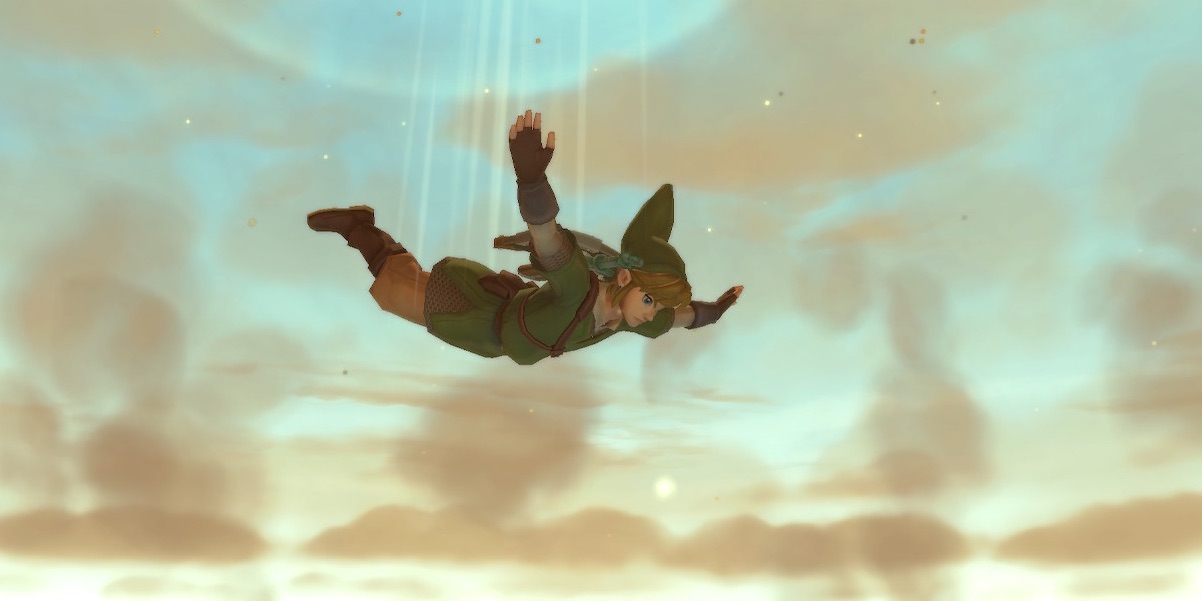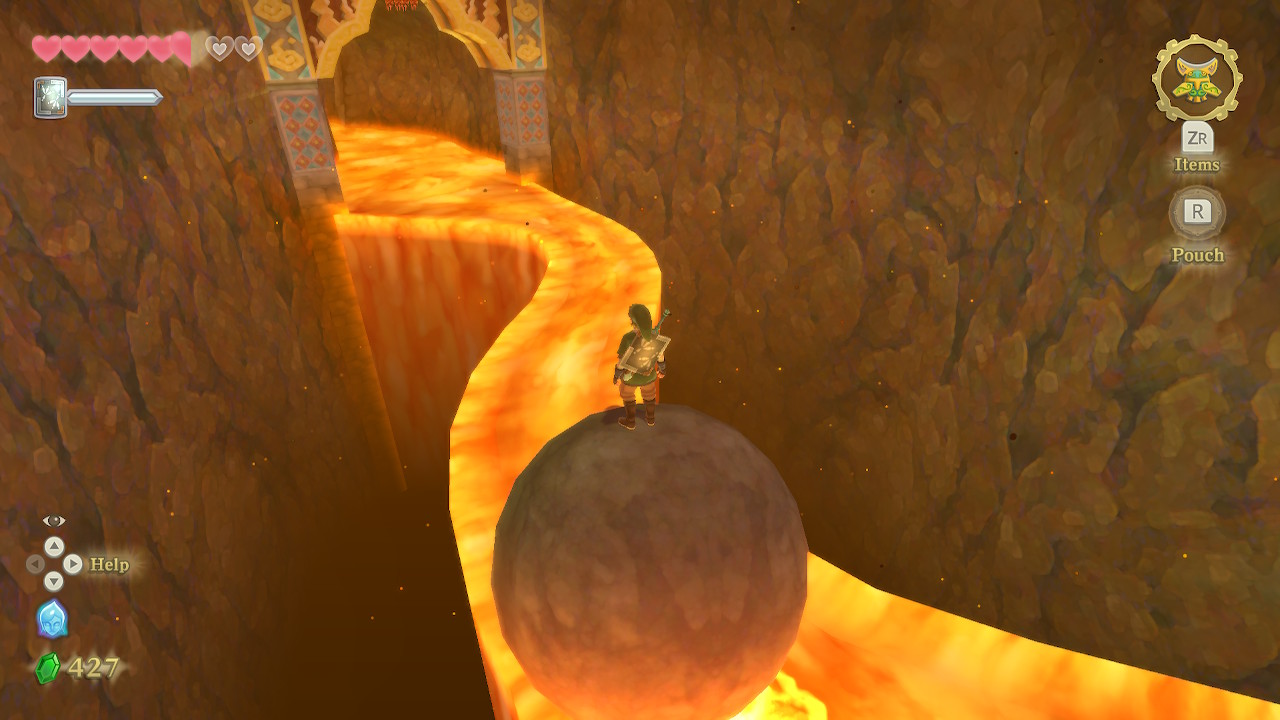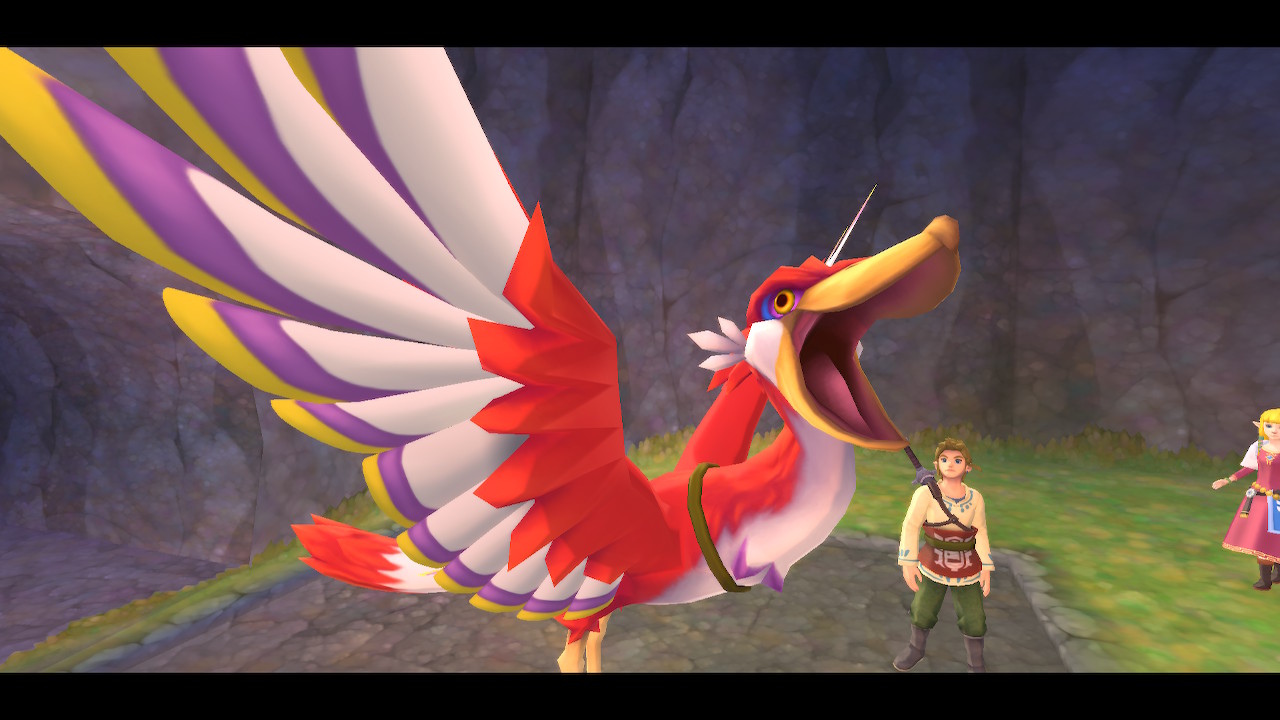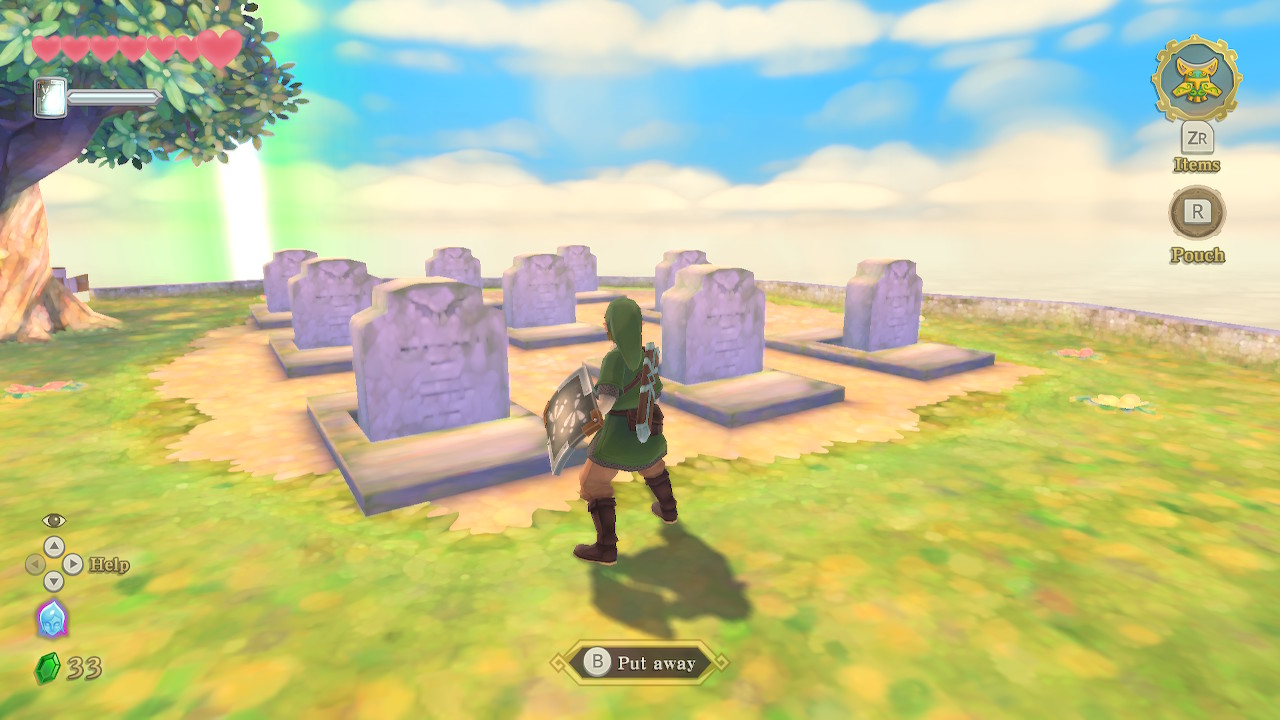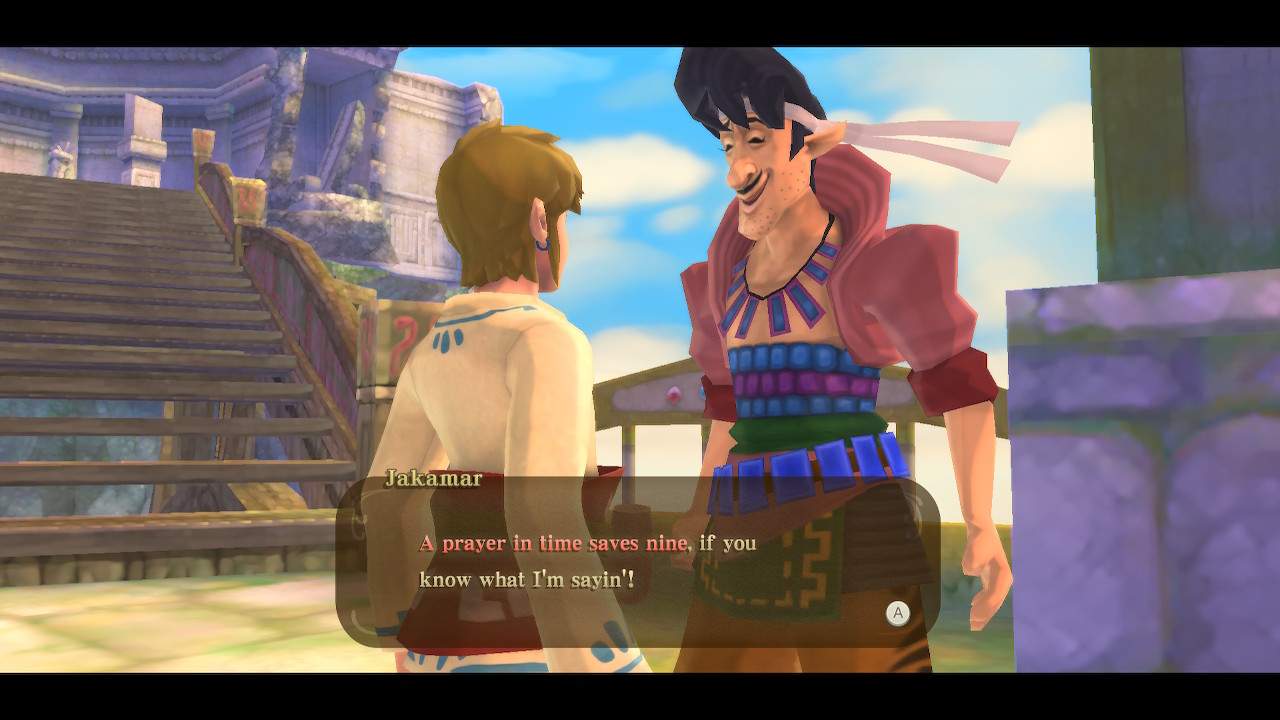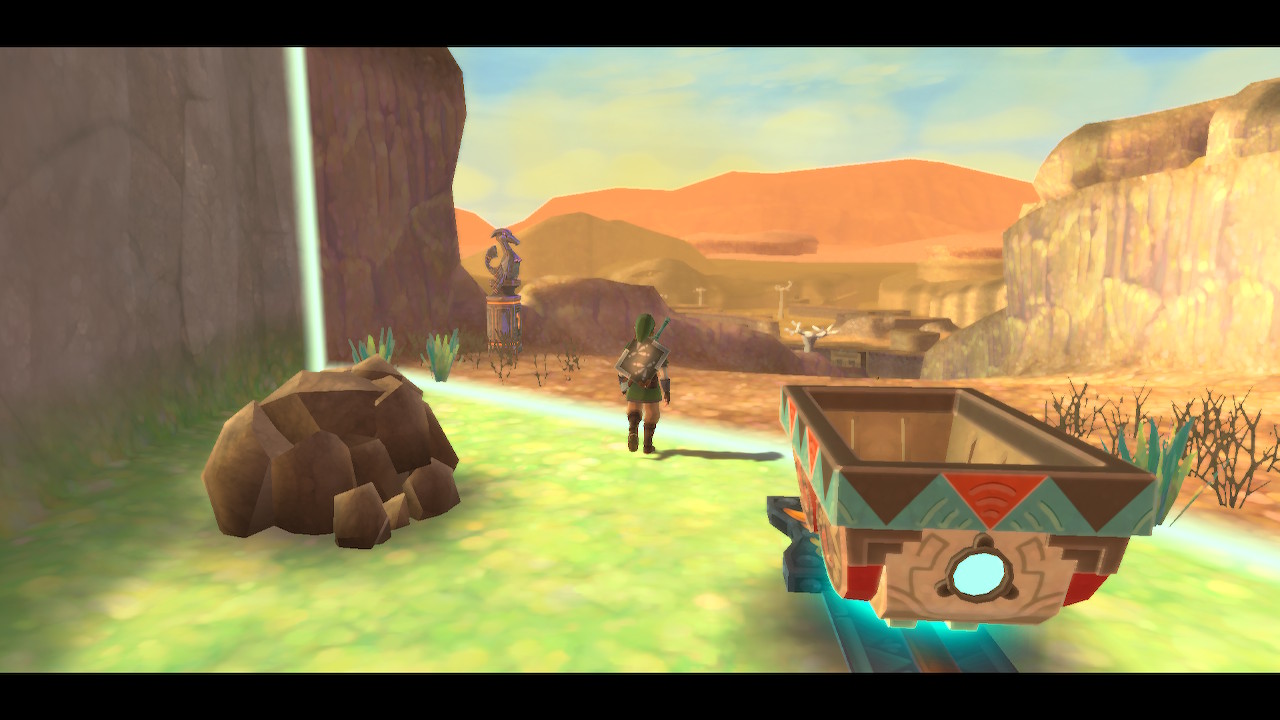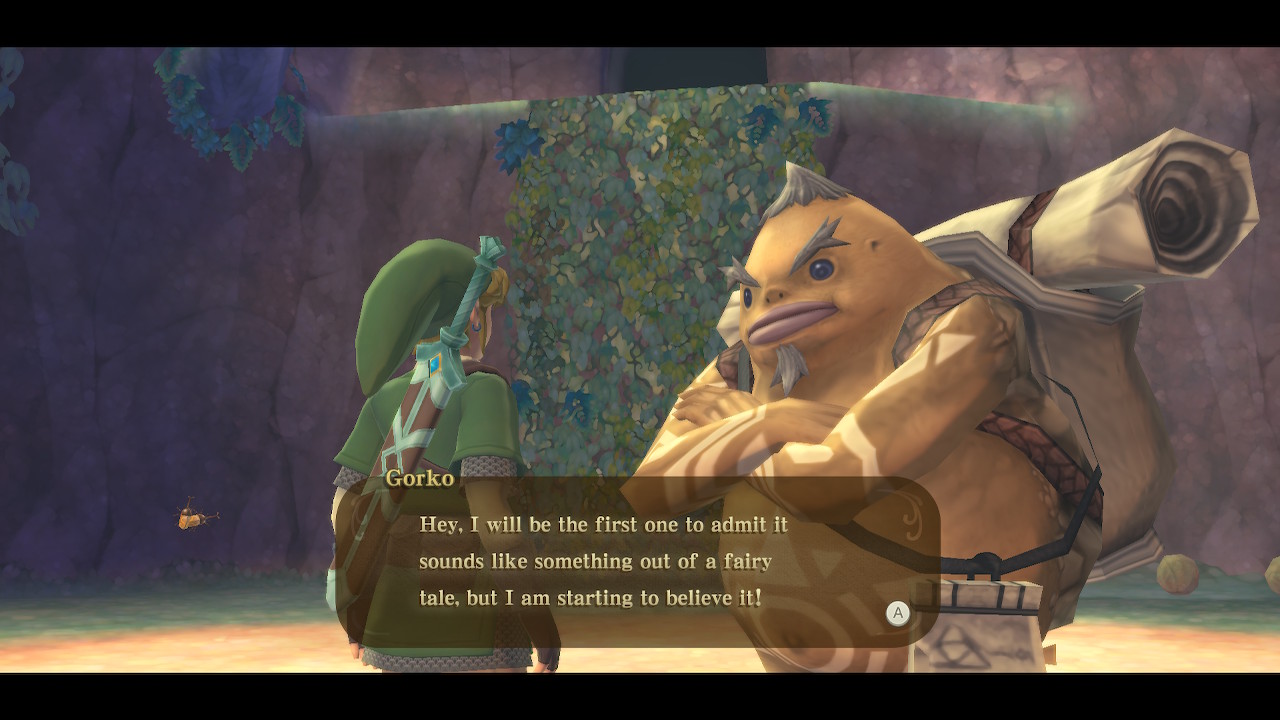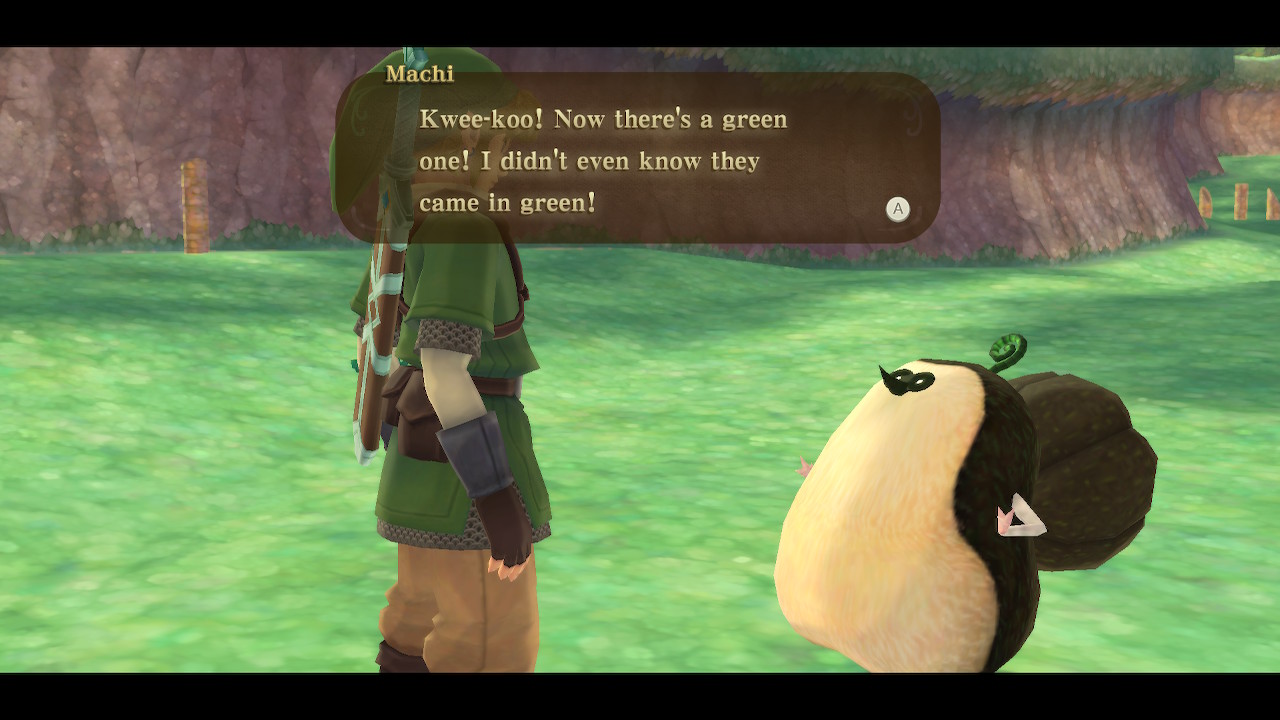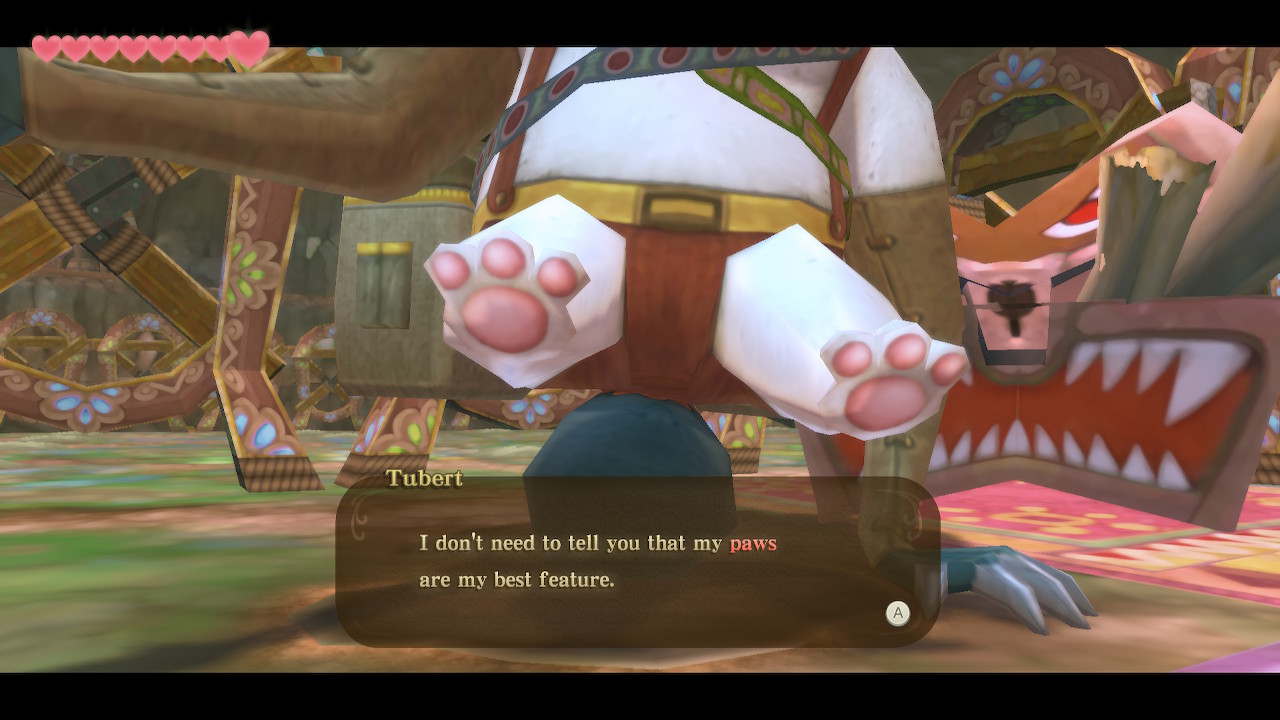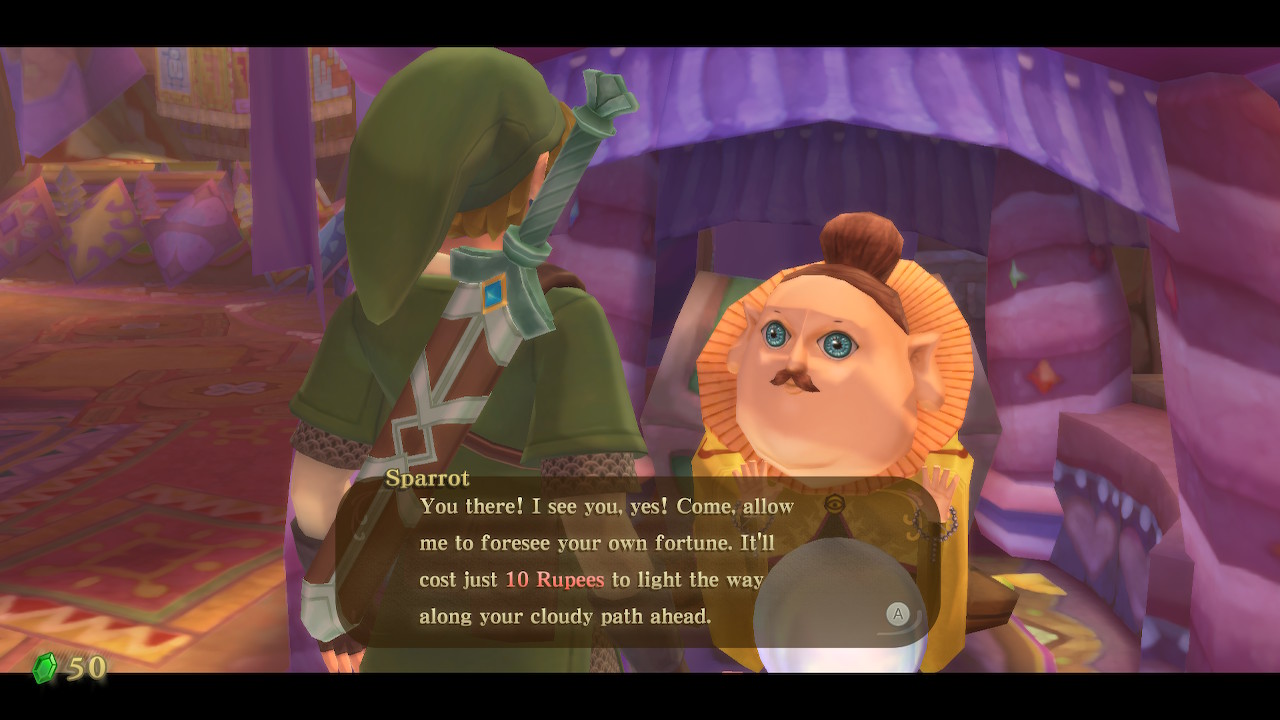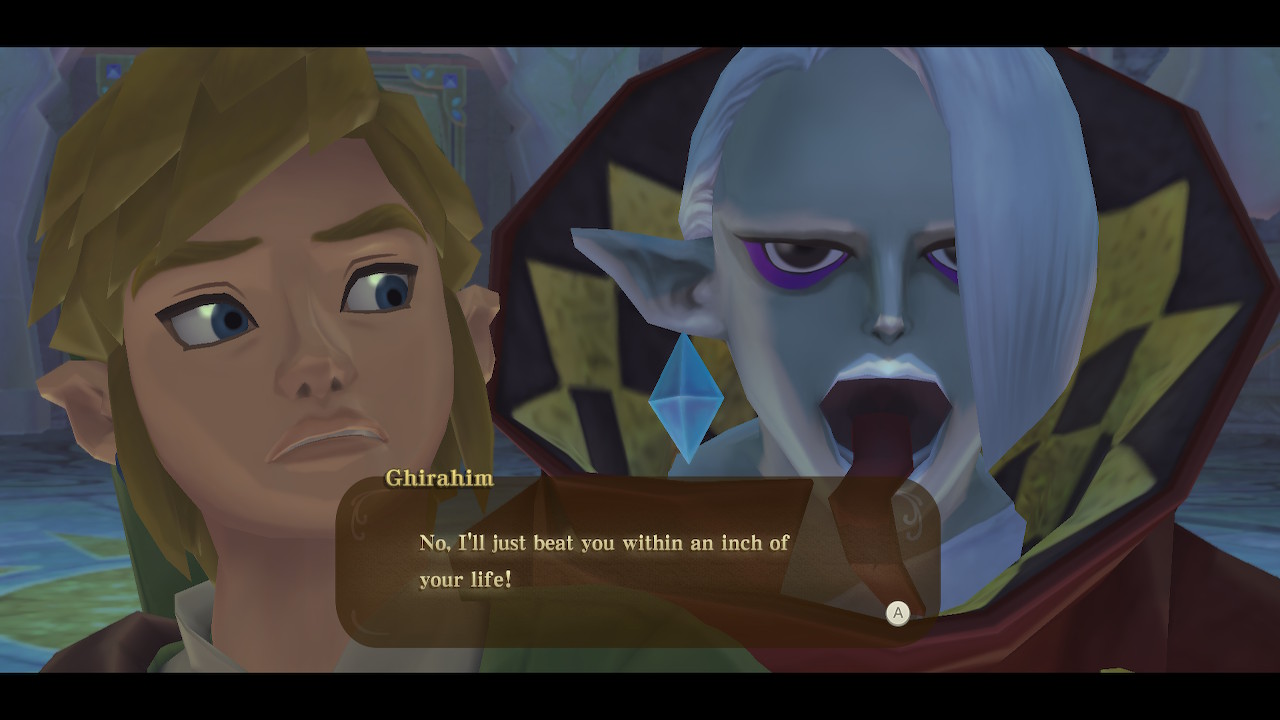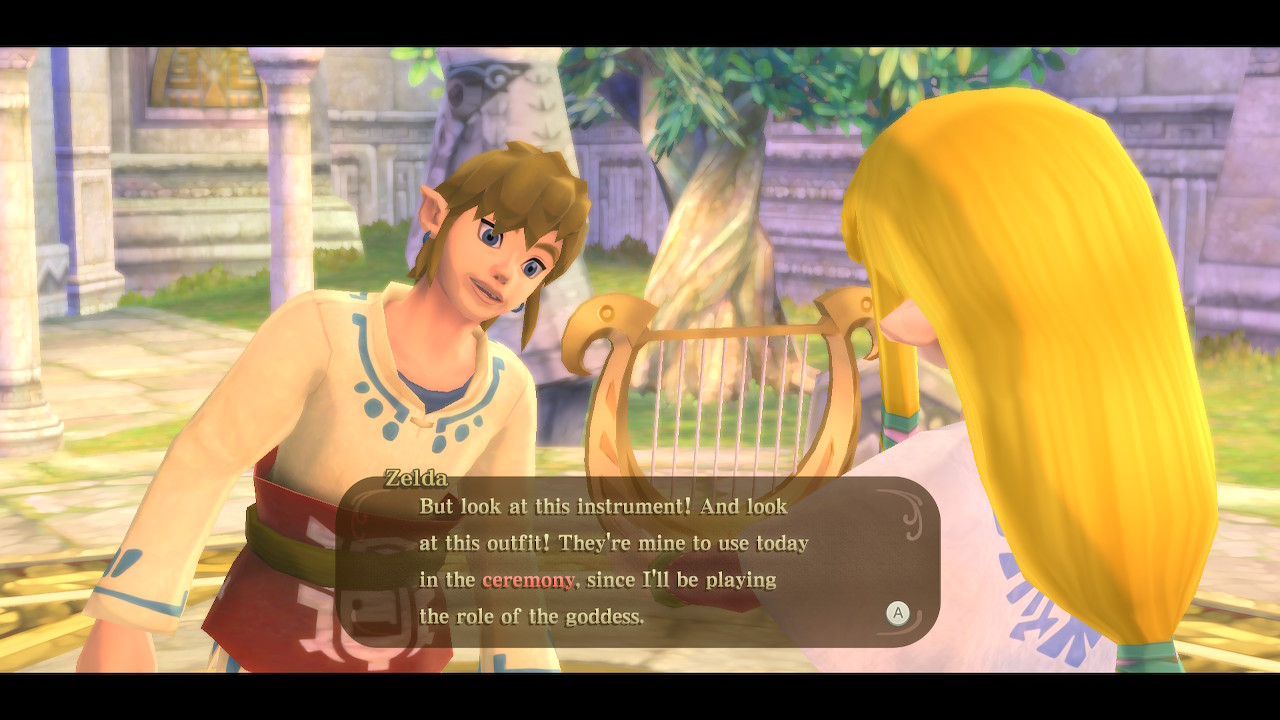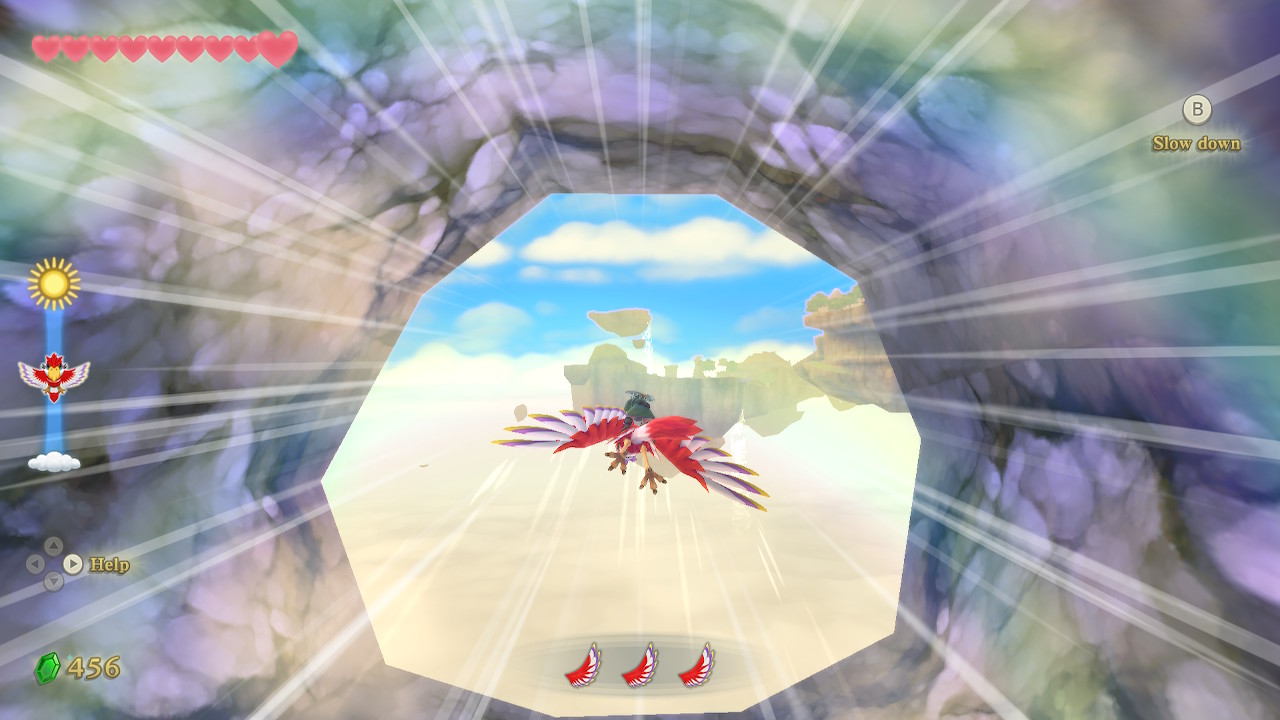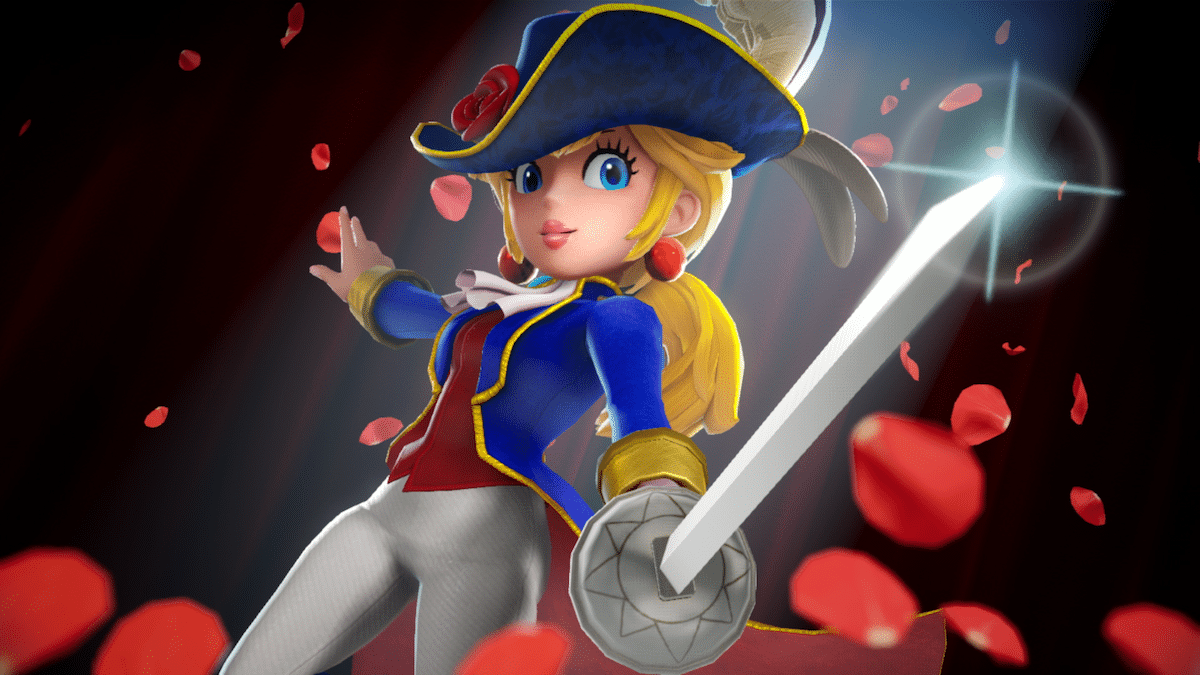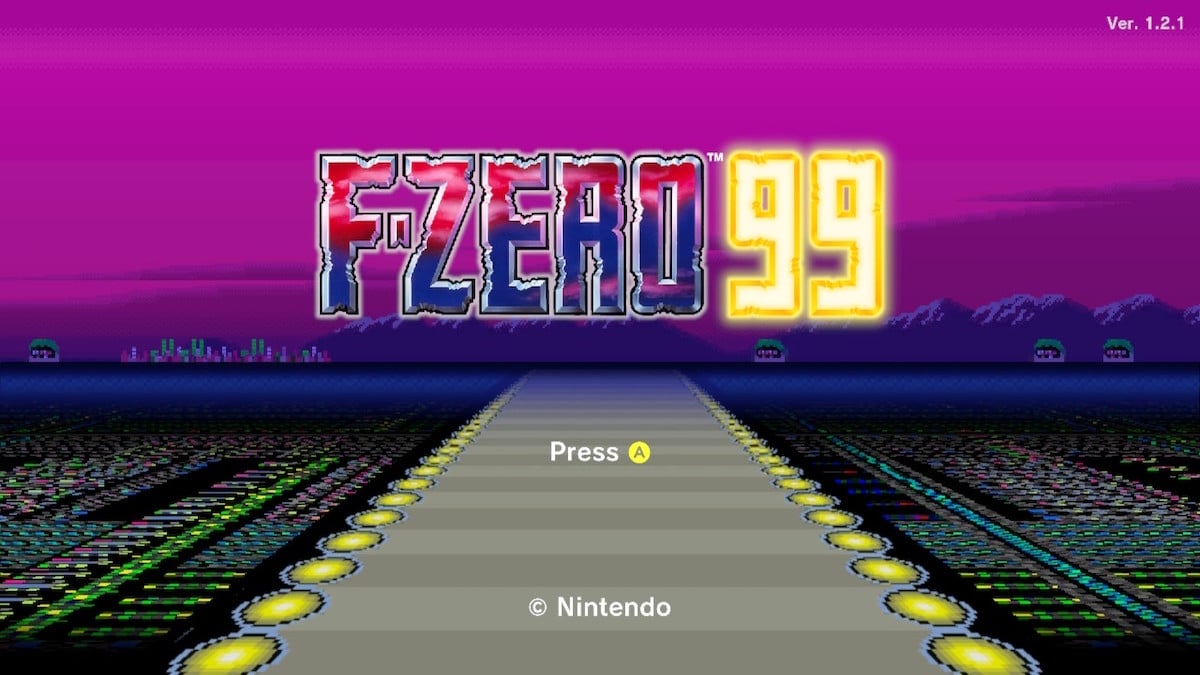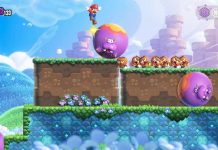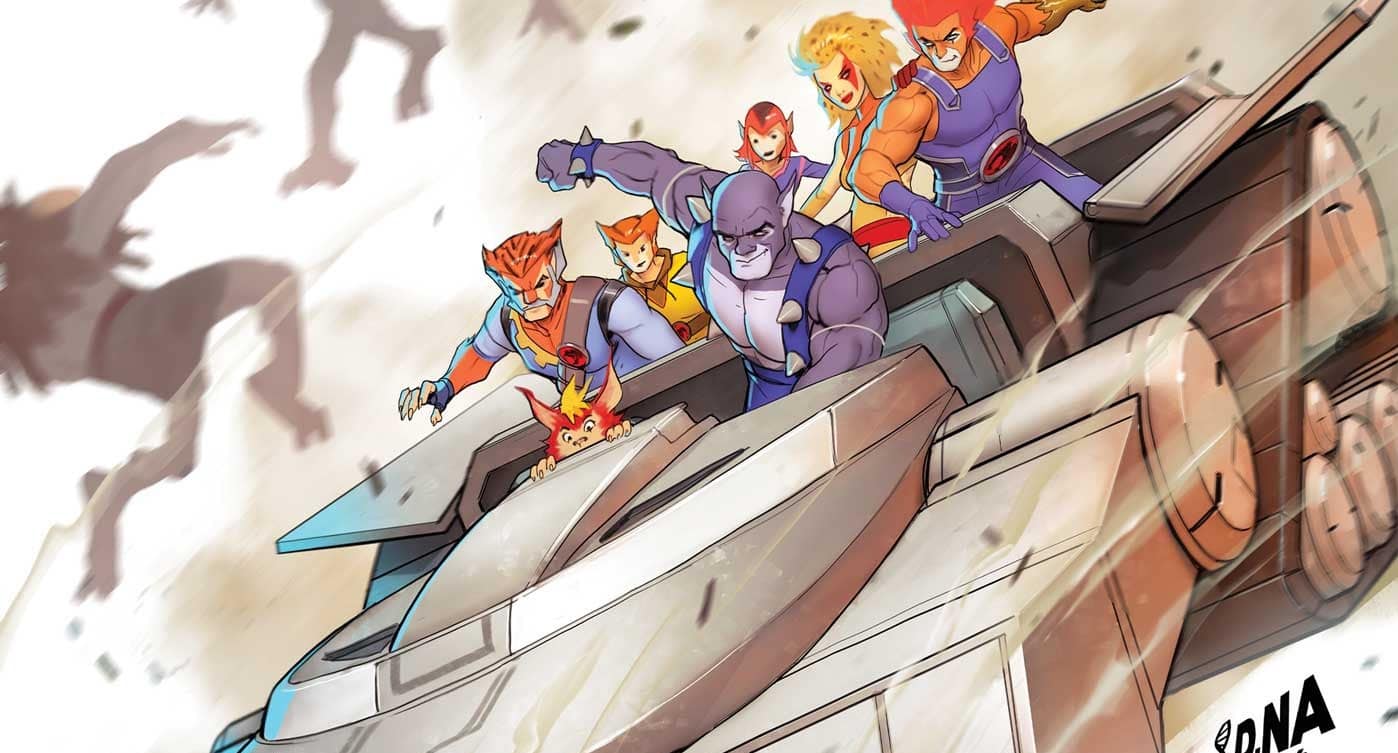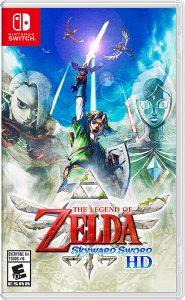
The Wiimote
Throughout Skyward Sword, you’ll encounter puzzles and enemy battles that rely on the motion controls… but if you’re playing using the Pro Controller (like I was, most of the time), these elements can seem like obviously vestigial remnants. It’s clear that the many instances of Link balancing as he walks a tightrope, rolls around on a ball that is suspended in lava, or takes aim using his slingshot were designed with the Wiimote in mind.
However, as great as the motion controls of the Wiimote proved to be with the Wii hardware, that style of gameplay doesn’t quite translate to the more button-oriented gameplay of the Switch. Furthermore, the days when we were all enamored with miming the motion of rolling a bowling ball in Wii Sports now seem well and truly behind us: the instances in Skyward Sword HD in which these kinds of tasks must be performed at this point seem incongruent with the rest of the game, which tends towards the type of adventuring gameplay that one expects from a Zelda game.
And by and large, the more outsized physical gameplay of the motion controls can mostly be executed using the Pro Controller, I did take the Joy-Cons off the side of my Switch once or twice, but it wasn’t long before I had reattached them.
In part, this may be because one of my Joy-Con joysticks didn’t survive Breath of the Wild intact, but frankly, although it is impossible to ignore the elements of the game that were designed with motion control in mind, these aspects seem redundant: the real meat of this game is the world, characters, and exploration, just like any other main-series Zelda title.
It does bear noting that the most successful adaptation in the game controls is the swordplay. Using the right joystick, the player can guide Link’s blade with more precision that simply smashing the button, allowing for the integration of directional attacks. This can make combat a more engaging proposition, as an enemy attempting to defend against your blows from one direction may leave themselves open to attack from the other.
World-building
World-building may be Skyward Sword’s greatest strength, but it still seems somewhat anomalous when contextualized in the larger Zelda timeline.
For one thing, it is clear that this game was a stepping-stone between the Zelda titles of the GameCube and the Zelda titles of the Switch. For example, the “over world” (which takes its name a little too literally this time around) calls to mind the ocean of Wind Waker, but expanded into a third dimension – a clear progenitor to the Hyrule we get to explore in Breath of the Wild.
The game design clearly considered how such an environment would affect the people who lived in Skyloft, and the result is one of the most interested elements of the game: take, for example, the carved bird statues that can be seen in Link’s bedroom, or the way that the Knights who rescue you if you tumble over the ledge at knight have spotlight helmets for their avian steeds.
In fact, Skyloft, the sky-suspended village that is Link’s home in this incarnation, is one of the joys of the game. Between its colorful residents, interesting design, and deceptively complicated layout, the soaring settlement calls to mind the best villages of the series (including Majora’s Mask’s Clock Town), and the bird-riding mechanic recalls the Skybax Riders of Dinotopia by James Gurney.
Some of the level design is also exceptional, especially the Lanayru Desert. A once lush landscape that was subjected to desertification as a result of mining, this area is built around the “Timeshift Stones,” an intriguing game mechanic that creates a spherical orb of the past when activated.
However, Skyward Sword takes things stranger territory still by introducing a slew of unfamiliar characters and creatures.
Beware of Scaldera
Although not without exception, the majority of the main series Zelda games include a similar roster of creatures, and often, the same characters (see especially Ocarina of Time and Majora’s Mask). However, while we do see some cameos from the familiar Gorons, this game doesn’t hesitate to introduce a whole slough of new creatures.
These include characters like the Kikwi, who occupy the forest level area and bear something of a passing resemblance to the Korok (especially in terms of personality). Other characters, like the semi-subterranian Mogwa, occupy a similar narrative space as the Gorons (but are otherwise quite different).
And even the enemies who bear familiar names, like the Lizalfos and the Bokoblin, have an aesthetic in this game that in most of the others (although the Keese remain pretty consistent). The overall effect is a Zelda game that feels like it belongs in the series, but containing details that at times seem almost incongruous.
Headmaster Gaepora
It isn’t just the creatures who get reimagined in Skyward Sword: it’s the characters, too. Other than Link being recast as a knight who rides a giant bird, the personalities and dynamic between Zelda and the Hero of Time remains fairly static. However, almost every other aspect of their situation changes – for example, Zelda’s father isn’t the king, he’s the headmaster of the Knight Academy.
Some of these new characters are especially memorable and engaging, like Groose, the leader of a trio of bullies who serve as Link’s antagonists in Skyloft, or Sparrot, the diminutive fortuneteller who runs a booth at the Skyloft bazaar.
Then, there’s the primary villain of the game, Lord Ghirahim. A demonic entity who, according to Dark Horse’s Hyrule Historia, was designed as something of a foil for Fi, Ghirahim is a flamboyant opponent who offers a nice change of pace from Ganondorf.
Skyward Sword HD
When compared with the polished perfection that is Breath of the Wild – a comparison that seems inevitable, given that this is the closest thing we’ve had to a second mainline Zelda game on the Switch – Skyward Sword HD comes off looking like a rough draft. This is doubly true in the moments where you can essentially see the skeleton framework that will evolve into Breath of the Wild.
However, if you missed Skyward Sword on Wii (like I did), or if you’re exceptionally curious about every step of the way on the long road getting from there to here, then Skyward Sword HD will prove to be a worthy addition to your Switch library.
Review code provided to The Beat by Nintendo.



